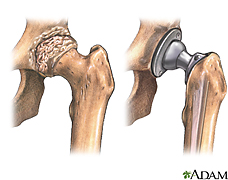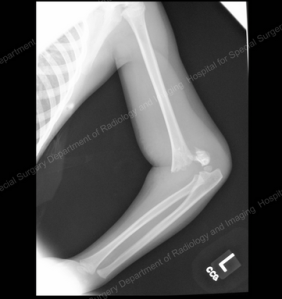A new hip replacement strategy, an anterior approach technique, allows the patient to experience less pain, have a quicker recovery, and improved mobility.
Dr. Harold Rees described this technique after performing the surgery on one of his patients, Sean Toohey, and witnessing the amazing results.
The day after Toohey underwent a total hip replacement surgery, he was able to walk halfway up a flight of stairs at the hospital. Later, in the afternoon, he made the quick transition from using a walker to crutches to a cane.
The patient was able to start working again just 15 days after his procedure, without having to struggle with his seriously arthritic hip that had been bone-on-bone prior to surgery.
“My brother, who has had both hips replaced, was very jealous of my outcome,” Toohey said. Most patients who previously underwent surgery with other techniques will probably feel the same way, considering a report from 2009 stated that the recovery time for total hip replacement surgery is between 1 to 6 months.
Dr. Rees now uses this anterior approach in all primary hip replacement surgeries that he is responsible for at Loyla’s main campus in Maywood and at Loyola’s Gottlieb Memorial Hospital in Melrose Park after watching Toohey quickly recover with less pain and better mobility, compared to patients who underwent the posterior approach.
The technique is called the anterior approach because the surgery is performed through the front of the hip, instead of the back (posterior). In order to gain access to the hip joint, the posterior approach cuts through muscles and tendons, while the anterior technique goes between them. The incision made is about 2 and a half inches long.
Since the muscles and tendons are not cut, there is less pain while the patient recovers because they are not forced to sit on the incisions. With this technique, the patient also has a reduced risk of dislocating the new hip.
The majority of hip replacement surgeries are done using other techniques because many hospitals do not yet offer the anterior approach. However, people are becoming increasingly aware of its benefits. Within the next 5 to 10 years, Dr. Rees believes that it will become the primary technique.
Although some doctors may question the approach because it is more technically challenging, there are specially-designed operating tables that make the technique easier. The surgeons are able to accurately control the angle, position, traction and rotation of the hip and leg.
Loyola has two of these tables: the PROfx and hana. Hana can also be found at Gottlieb Memorial Hospital.
Written by Sarah Glynn
http://www.medicalnewstoday.com/articles/252400.php
Picture courtesy of www.nlm.nih.gov

